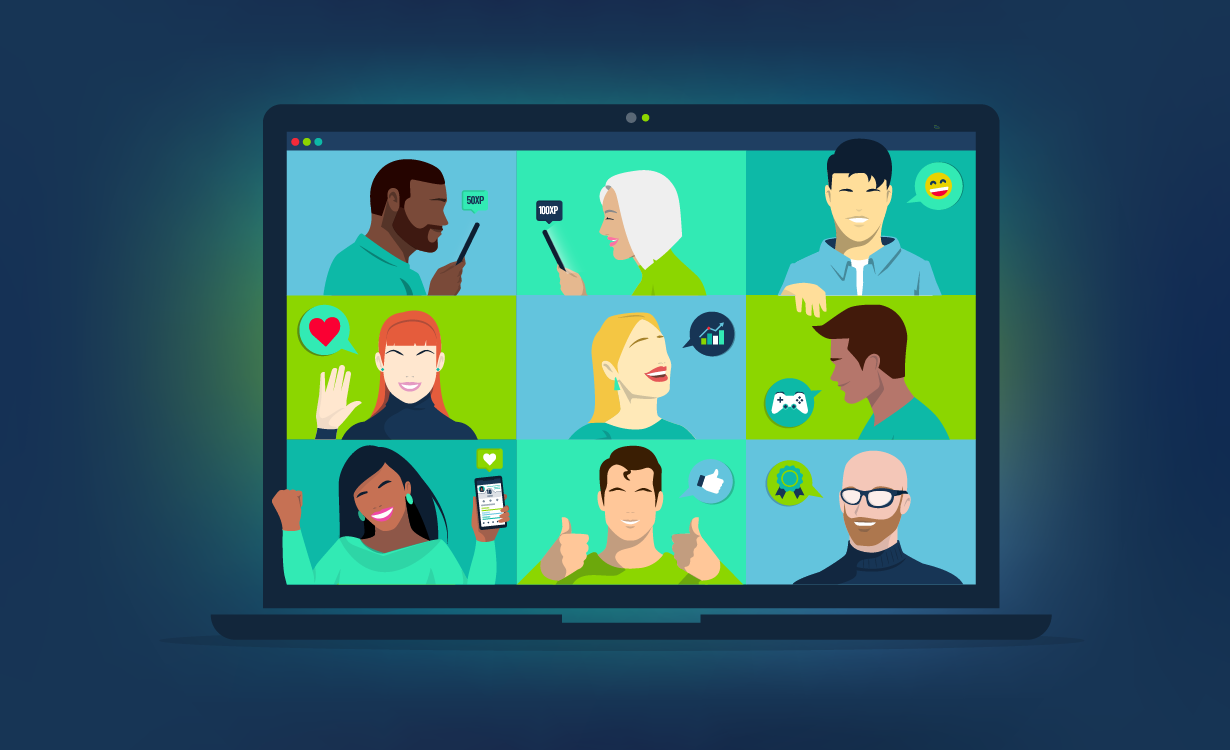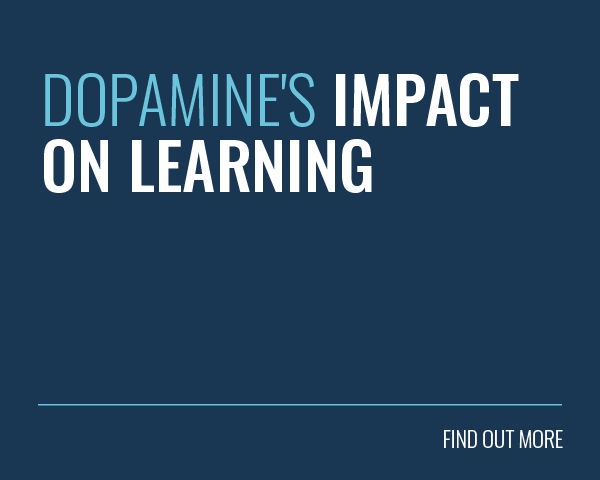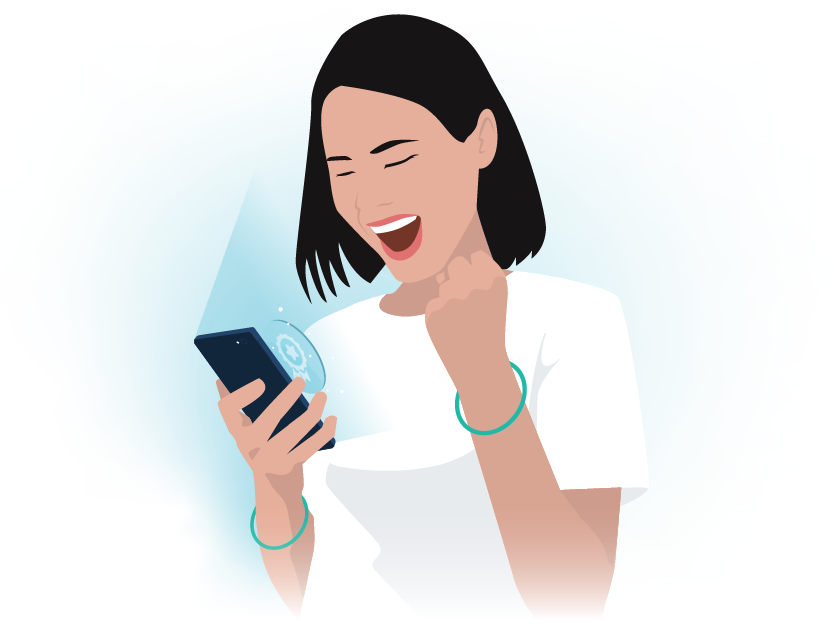
The idea of fun in learning or fun in education can be a hard one to grasp. Yet, at heart, we all know that learning is fun. At least, it can and should be.
Do you remember the last time you sat down just to learn something new or improve your skills at work?
Though the idea of self-development is exciting, the process itself can be dull. It’s also difficult to find the time. According to Josh Bersin, we only dedicate 24-minutes a week to learning at work.
Winston Churchill once said “Personally, I’m always ready to learn, although I do not always like being taught”. Unfortunately, this is how most of us see learning and development.
Regrettably, the approach to traditional training hasn’t evolved much since Churchill was yawning at the back of a classroom. Yes, technology has moved on, but the thought of accessing an online learning platform probably doesn’t fill you with a sense of joy either.
This raises the question of how we can make adult learning or workplace learning fun. As it happens, that’s our speciality. And in this article, we’ll spill all our secrets!
Ready for some fun and games? Let’s go!
Fun in Learning: The Research
Let’s start with the headline statistics. According to a recent study, 91% of learners value fun in learning. It’s also effective. Gamification can improve company productivity by up to 50%. And learning games increase knowledge retention by 9%.
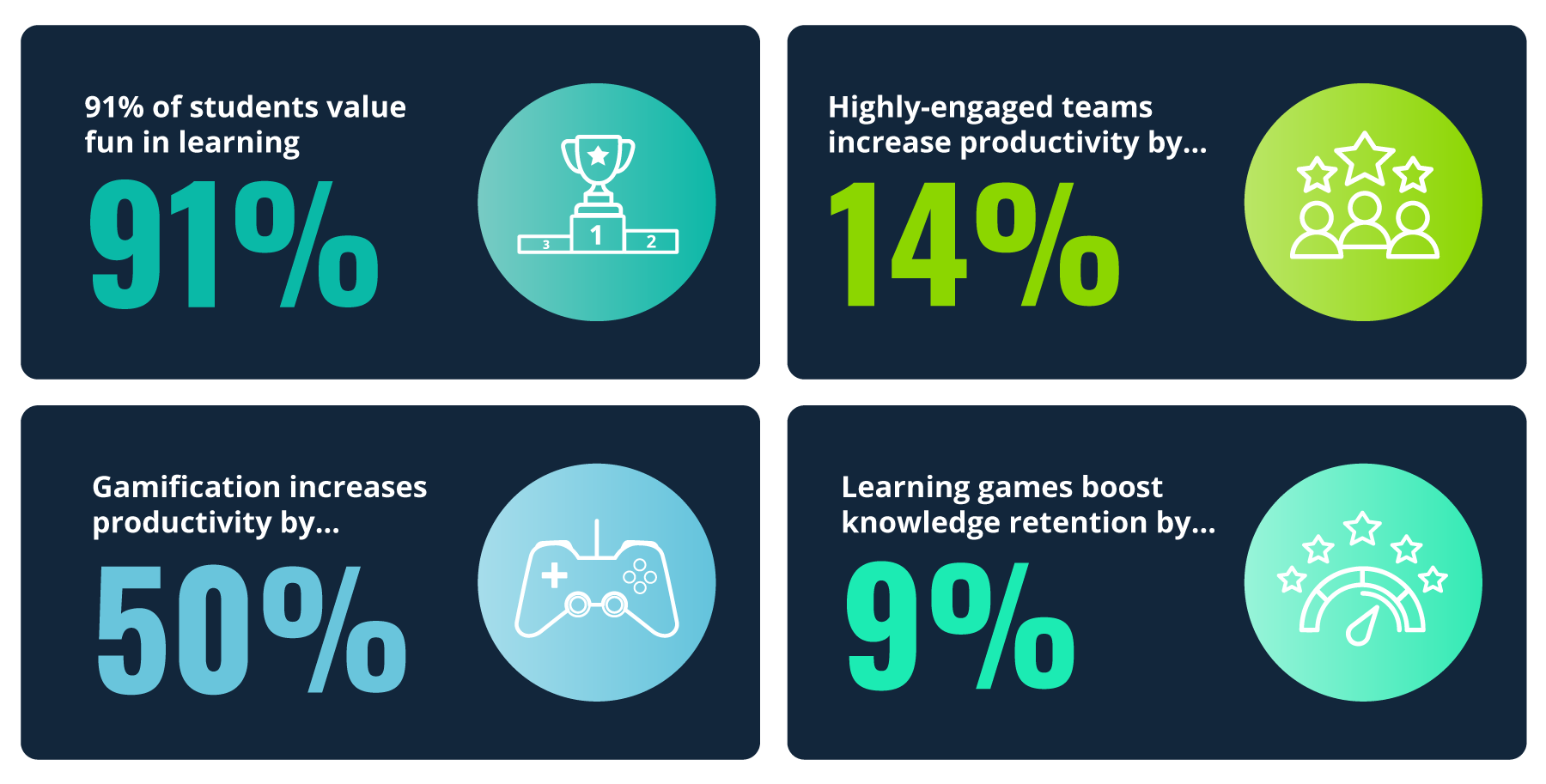
What’s more, all this engagement leads to teams that are 14% more productive. Wow! Clearly making learning fun has a strong positive influence. This is backed up by plenty of research. For instance:
- A study in The Journal of Experimental Education found that students scored higher in their final assessment when the professor used humour in their lectures.
- In a study for the Journal of Vocational Behaviour, Michael Tews found that employees are more likely to try new things if their work environment is fun.
- Dr Laura Kubansky has conducted research that shows that fun is good for your health.
- Many influential researchers, like Dulay & Burt (1977) and Krashen (1982), have found evidence that people learn better when they’re feeling strong positive emotions.
These are just few quick examples from the abundance of research into the impact of making an enjoyable learning experience. It’s clear that fun has an impact on learning effectiveness and memory retention. It also promotes self-determination and self-led learning.
The Science of Fun in Learning

In her book, neurologist Judy Willis showed how fun experiences increase levels of dopamine and endorphins in our brain. These hormones are important for successful learning.
Dopamine is known as the ‘feel-good hormone’ with good reason. It has the power to make learning feel pleasurable and rewarding. Endorphins, on the other hand, help you to deal with stressful situations (such as compliance deadlines).
A good mood has also been shown to improve the value of perceived rewards. This includes the gratification that comes with learning something new, or that sense of accomplishment we feel when we pick up a new skill.
As Aditya Shukla puts it, ‘positive emotions broaden our attention’s capacity and help us to draw mental resources, increase access to memory networks, semantic relationships, and motivate… efficient thinking’.
Now we have scientific-backing, let’s get into the nitty-gritty.
Why Is Fun In Learning Important?
A life without laughter, entertainment and fun would be downright dull. And we can all agree that life’s too short for boring! As such, it only makes sense to ensure your organisation has room for excitement.
Fun at work can take many forms. Let’s explore some of the ways a little fun can make a big difference.
1. Skyrocket Your Learners’ Productivity

It’s probably not a surprise that a fun working environment makes us happier at work. And this can have a big influence on your organisation!
The good news? Happy employees are 12% more productive! The great news? It’s not just happiness that increases positivity. Research shows that simply having a good laugh makes us more productive and resilient.
As such, next time you have a challenging work project, tight deadlines, or back-to-back calls ahead of you, an impromptu #joke-off could be just the motivation you need.
2. Less Empty Seats

No, we’re not talking about Musical Chairs Monday (but while we’re at it, that sounds like an awesome idea!). Instead, we’re focusing on absenteeism.
In fact, research suggests that 62% of people who engage in fun activities at work then go on to take no sick days in the following three months. On the other hand, this drops down to just 38% of people if they do not take part.
As such, organise fun activities at work and make sure your company culture is relaxed and supportive. This will help you to reduce your recruitment costs.
3. Raise Resilience

Whether you’re facing a business crisis, a bad day at the office or just a bad hair day, resilience is essential in times of adversity. That’s where fun and laugher can help. After all, it’s good for our health and well-being.
In fact, a hearty chuckle can lower stress and boost immunity. And did you know that our muscles relax for up to 45 minutes following a good giggle?
Encouraging a positive office culture that advocates fun and laughter helps protect staff against the stresses and strains of day-to-day working life. This, in turn, helps you to create a more resilient workforce.
4. Increase Creativity
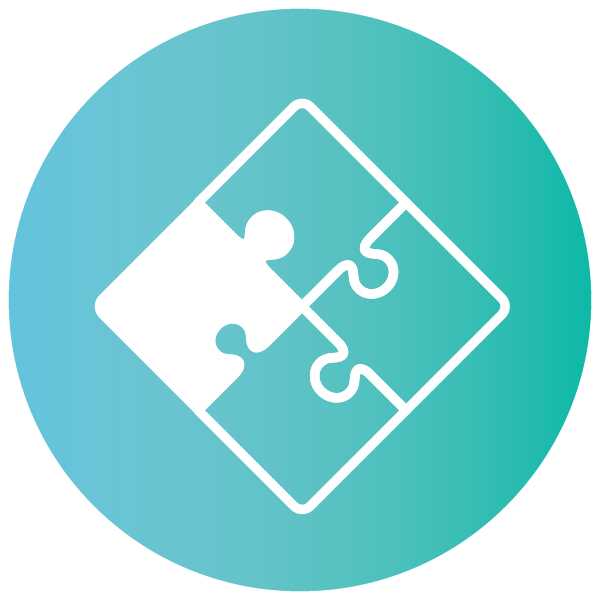
All work and no play makes Jack a dull boy. It’s true — without a little fun in the office, people become dull and uninspired.
This means that their creativity suffers. In contrast, 55% of staff who’ve taken part in a fun activity in the last 6 months feel more creative. As such, creativity is essential for organisational success.
After all, a workplace where people feel free to laugh helps them to share their ideas freely. This creates a culture where ideas bounce back and forth effectively. It’s clear a little fun can make all the difference when it comes to business innovation.
5. Cater To All Learners

Fun means different things to different people. One person’s micro-scooter may be another person’s Harley Davidson. Likewise, someone’s snowboarding dream getaway might be another person’s vertigo nightmare.
Most people like to have fun, but some like it more than others. Indeed, 79% of millennials think fun at work is important, compared to just 55% of older generations.
On top of this, fun looks different depending on your learners’ role within the company. For example, only 14% of business owners see dress-down days as fun compared to 29% of graduates. The research also shows that business owners are less likely to value fun at work than employees.
So, next time you’re planning your company’s wellbeing strategy, staff conference or social event, ask your people what they want. This fosters a working environment of inclusion, diversity, Epic Meaning, and, of course, bucket loads of fun.
6. Make Fun a Habit
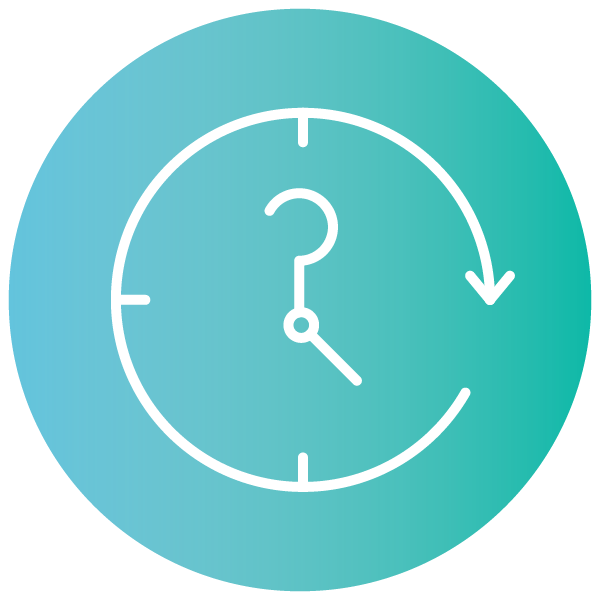
One-off away days, team events, or socials have their role. These activities will probably boost morale temporarily, but how long will this serotonin high last?
In fact, for fun to translate into happiness and success, it needs to become a habit. This means that fun-focused events and activities should be a regular occurence.
As such, you should seek to make fun a part of your company culture. And, of course, make it part of your learning culture to keep your staff happy, engaged and motivated.
Barriers to Having Fun While Learning
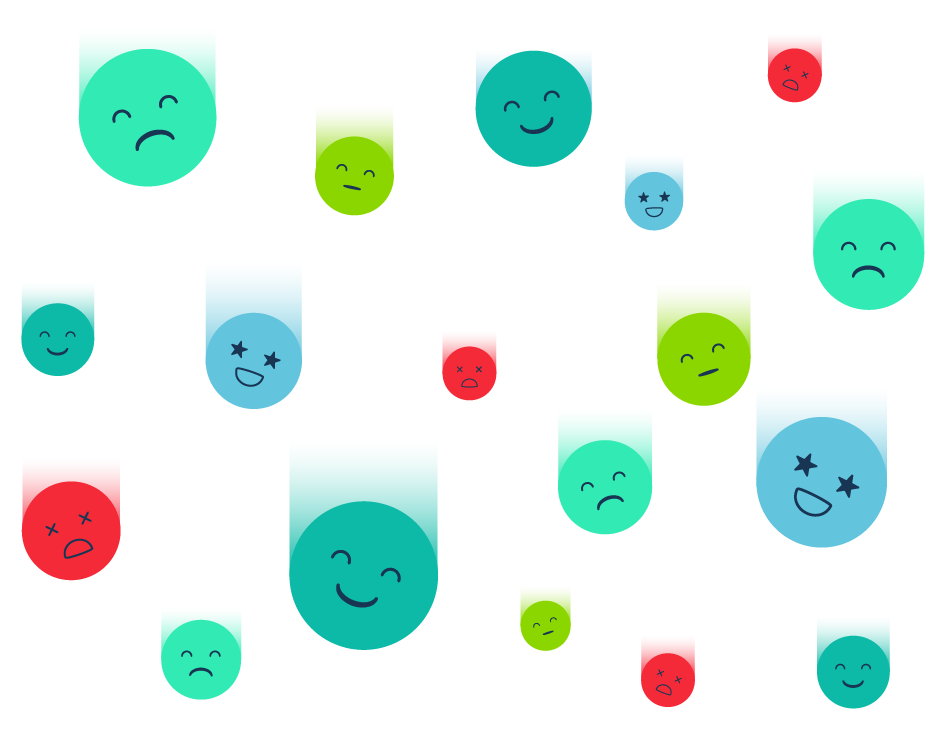
Now we know the science and benefits of having fun at work and while learning. So, why are there still organisations that struggle to make their learning culture exciting?
Let’s have a look at the typical barriers to having fun while learning.
- Many individuals still associate education with the traditional view of sitting in a classroom and following an instructor-led session. After all, this is what most of us have grown up with. This approach doesn’t leave as much room for fun and creativity, so it may feel difficult to know where to start.
- Educators who are not used to incorporating fun into their training programmes may fear losing control if they do so. After all, if not done right, fun can lead to distracted learners. This fear can be challenging to overcome, as many instructors feel pressure to maintain authority over their classroom.
- Incorporating fun into learning experiences requires creativity and innovation. This can be challenging for educators who have limited resources or those who lack the knowledge to design engaging and entertaining training programmes.
- Finding a balance between different learning preferences (or dare we say, learning styles) can be challenging. After all, some learners prefer a more structured approach to learning, while others want a more relaxed and fun learning environment.
- Most learning professionals don’t come from a technology background. As a result, they don’t necessarily know the extent of what’s possible in terms of engagement tools and features.
- Most educational systems still measure success primarily through standardised testing and assessments. As a result, some instructors may feel pressure to prioritise performance over fun and enjoyment.
How to Make Learning More Fun
While these barriers may seem insurmountable, there is a lot that can be done. In fact, learning technology can help you to create an engaging and informative experience brimming with fun.
1. Gamification

What‘s more fun than a good game? Gamification is the application of game mechanics to non-gaming environments to help incentivise activity.
As such, it allows you to bring all the fun of Fortnite or Minecraft straight into your learning platform (such as your learning management system). In fact, the push for digital transformation is behind the recent popularity of gamification.
Game mechanics, like Experience Points, Levels, and Badges keep your learners engaged and motivated. As a result, they will be excited to explore content and continue their learning journey.
2. Social Learning

Humans are social animals by nature. As such, social learning is another great way to boost the fun factor throughout your training programme. In fact, social learning comes with vast benefits.
By promoting increased learner participation, your learners will develop a sense of belonging and ownership. Similarly, they will form better relationships and improve communication with their peers.
Creating an effective social and knowledge-sharing culture gives your learners more opportunities to improve their skills and knowledge. To do so, you simply need to unleash the communication and collaboration features within your learning platforms.
3. Mobile Learning

Whether they’re based at your company’s head office or in a remote wilderness, mobile learning enables your learners to stay connected to the fun wherever they are.
Indeed, mobile learning means that no one has to miss out on the latest training unit, social post or company competition.
After all, mobile devices are a familiar part of our everyday lives. We use them to stay connected, stream music or videos and play games. Why wouldn’t we use them for learning as well?
4. Microlearning

One sure way to kill the fun is to have your learners listen to a 5-hour seminar or explore text-heavy documents. As such, make sure that your training content is easy to digest.
You can do so by implementing microlearning. This approach breaks your training content down into small, bite-sized chunks that only take minutes to complete.
As a result, your training will fit better into your learners’ schedules. For example, your learners can complete a training unit during their morning commute or while waiting for a meeting to start.
5. AI and Immersive Technology

Two of today’s biggest trends, artificial intelligence and immersive technology, also happen to be excellent ways to make sure your team has fun during their learning experiences.
Immersive technology has the capability to integrate the real and virtual worlds. It typically covers virtual reality (VR), augmented reality (AR) and mixed reality (MR). Artificial intelligence (AI), on the other hand, simulates human intelligence within machines.
Today, these tools can be used to create fun and stimulating training sessions. For example, through VR you can create real-world-like simulations where learners get a safe environment to practise their skills.
As a result, they get to learn by doing, even with difficult topics that are usually more challenging to teach. These experiences are typically informative and engaging.
Practical Examples of Fun in Learning
If an academic study doesn’t do it for you, how about some real-world examples that showcase the effect of fun on human behaviour?
1. Volkswagen’s Gamified Staircase
As part of their ‘Fun Theory’ campaign, Volkswagen turned a staircase into a giant fully-functioning piano keyboard. The result? 66% more people chose the stairs over the escalator.
This just goes to show that fun can change the way people behave in a situation that would otherwise be a boring chore. In fact, changing behaviour becomes much easier if you make the process enjoyable.
2. HubSpot Meetings
HubSpot’s previous CEO, Brian Halligan, had a small rooftop terrace where the team gathered for beers after work. Why? Brian believed that these meetings were, in fact, the reason behind the company’s success.
After all, these after-work sessions enabled the HubSpot team to come together. Ultimately, this helped to make work a more sociable and fun place to be.
3. Nike Run Club
Running is hard. If you don’t have a running partner, a trainer or any other form of encouragement, it’s all too easy to fall out the habit. Enter Nike Run Club, an app that expertly deploys Nir Eyal’s Hook Model to effortlessly incentivise regular activity.
Nike Run Club offers GPS tracking, guided workouts, coaching plans, and friendly motivation. It’s also fun. Runners complete challenges in order to earn achievements (such as ‘Longest Run’ or ‘Fastest 5k’). These virtual rewards can even be shared with your friends.
4. Gigantic Ball Pit Downtown
To test if senior business executives still had time to enjoy themselves, Mark Gagnon installed a giant ball pit in a business area. He then asked passersby if they were too busy to have fun.
What he found was that inside each business person in a suit there’s a carefree fun-lover desperate to get out! This, in turn, tells us that fun is also suitable for corporate learning environments.
5. LinkedIn Walk & Talks
LinkedIn introduced walk & talks where team members can take a stroll to catch up or have meetings. It’s a great way to introduce some exercise into the workday, and it releases fun-inducing endorphins.
These neurotransmitters help us to reduce stress, improve health and make people happier. This ensures your learners and employees are in the ultimate mindset to smash their goals.
6. EON-XR’s Stargazing
VR technology and applications like EON Reality offer an immersive way to learn about the night sky. This enables users to virtually gaze at the stars, explore celestial bodies and identify constellations.
This method creates a dynamic, fun and engaging learning experience, making it easier to understand and identify celestial phenomena. Pop your headset on and you’ll be an astronomy ace in no time!
7. My Beauty Club
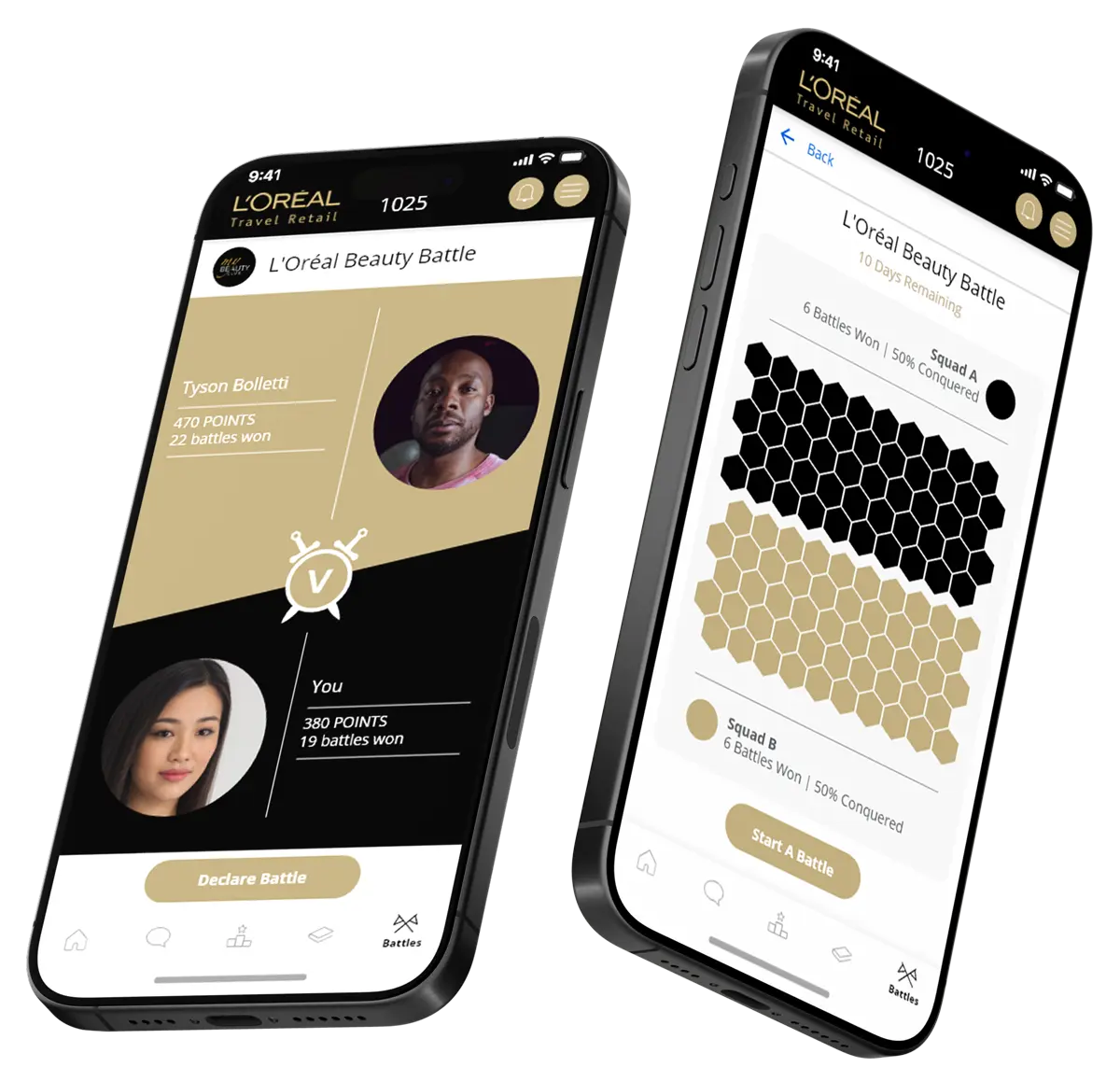
In 2020, Covid-19 brought the travel retail industry to a standstill. As a result, L’Oréal Travel Retail started to train 5,500+ Beauty Advisors online.
To do this, they created My Beauty Club, built on the Growth Engineering Learning App framework. It uses gamification, microlearning and social learning to create high-performance learning cultures.
As a result, My Beauty Club has produced unprecedented levels of learner uptake, helping L’Oréal Travel Retail to smash their learning goals. But don’t take our word for it. Check out the engagement statistics below:
- 18,410+ social engagements per day
- 23,500+ modules completed per month
- 312 contests completed per learner
Final Words
Fun, pleasure, excitement — call it what you will, its an essential ingredient in any training endeavour. If you don’t spend time making your learning experience compelling, how can you expect your learners to spend any of their time on it?
Unlocking engagement in your learning platform isn’t some dark art known only to mystics and seers. It’s actually a lot simpler than you might think. Just follow our suggested steps and let the fun begin!
Ready to add fun to your learning and development approach? We’ve got your back. Our 150 Nifty Learner Engagement Tips will help you to unleash the power of engagement throughout your organisation.


